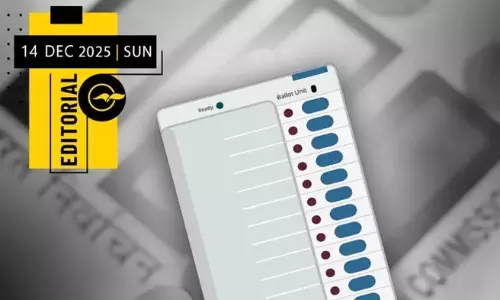
Asteroid deflection mission ejected 7 railcars of debris into space
text_fieldsNASA: After the American national space agency deflected the orbit of an asteroid seven million miles away, 1 million kilograms of rocks and dust have been ejected into space, it said.
A NASA spacecraft made a successful deflection on September 26 and cleared a historic experiment on humanity's capacity to stop a celestial object from threatening the Earth. The Double Asteroid Redirection Test (DART) took off from California and hit the target after ten months at 7:14 pm Eastern Time (2314 GMT).
The ejected debris after the bombardment of the target, the space asteroid Dimorphos, had enough material to fill six to seven rail cars.
NASA said in a release, "The team is using that data - as well as new information on the composition of the asteroid moonlet and the characteristics of the ejecta, gained from telescope observations and images from DART's ride-along Light Italian CubeSat for Imaging of Asteroids (LICIACube) contributed by the Italian Space Agency - to learn just how much DART's initial hit moved the asteroid, and how much came from the recoil."
However, Dimorphos or the larger asteroid it circles, Didymos, are not dangerous to Earth. DART's mission was for target practice.
The NASA team estimated that the momentum transferred when DART hit Dimorphos was roughly 3.6 times greater than if the asteroid had simply absorbed the spacecraft and produced no ejecta at all. The ejecta helped the asteroid move more than the spacecraft did. This estimate was based on the assumption that Didymos and Dimorphos have the same densities.
The SpaceX rocket launched DART in November 2021 and was steered by NASA flight directors until the last hours of the trip. In the final hours, autonomous onboard navigation software guided the craft.























